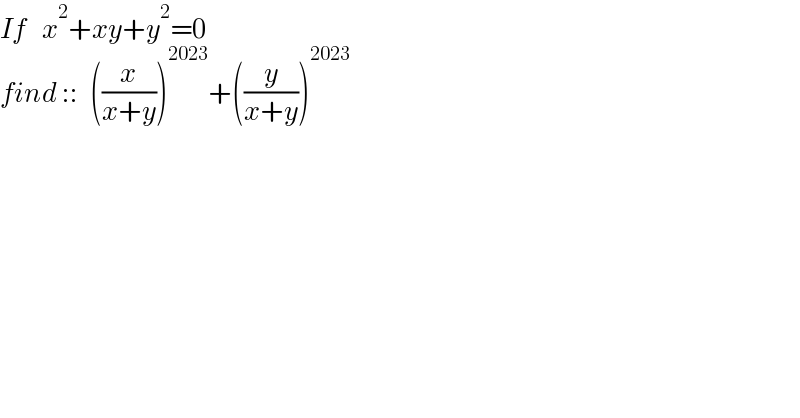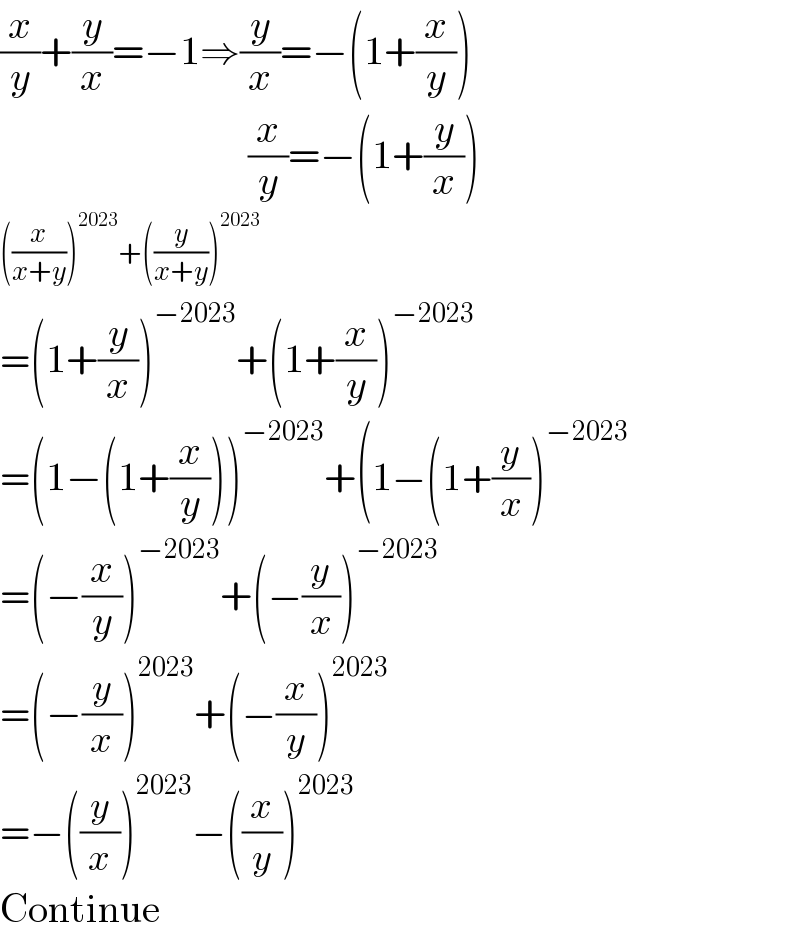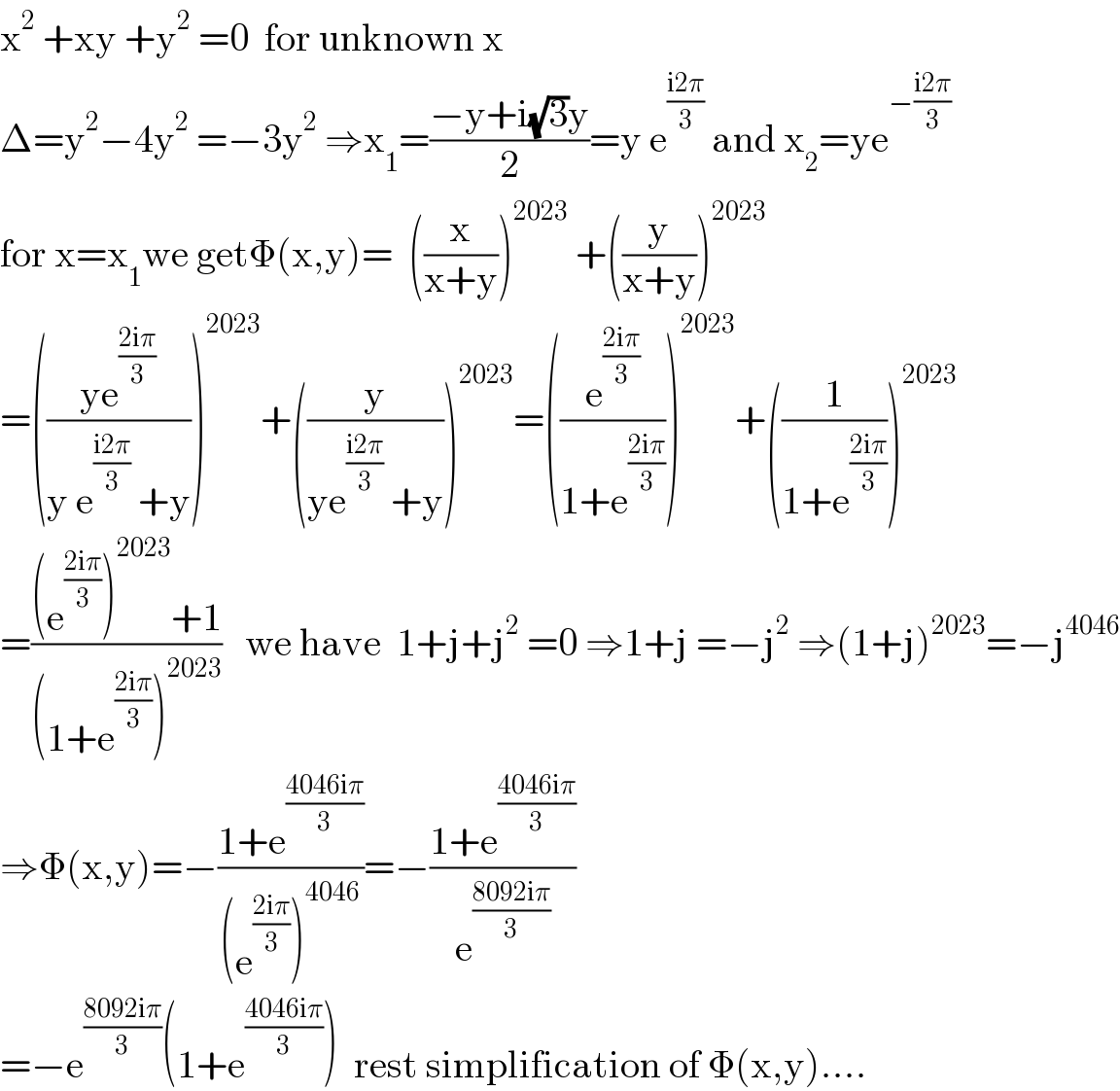
Question and Answers Forum
Question Number 139948 by qaz last updated on 02/May/21

Answered by Rasheed.Sindhi last updated on 04/May/21

Answered by mathmax by abdo last updated on 02/May/21

Answered by mr W last updated on 02/May/21
![let t=(y/x) x^2 +tx^2 +t^2 x^2 =0 t^2 +t+1=0 ⇒t+1=−t^2 (1/t^2 )+(1/t)+1=0 (1/t)≠1 ((1/t^2 )+(1/t)+1)((1/t)−1)=0 ((1/t))^3 −1=0 ⇒((1/t))^3 =1 ((x/(x+y)))^(2023) +((y/(x+y)))^(2023) =((1/(1+t)))^(2023) +((t/(1+t)))^(2023) =(−(1/t^2 ))^(2023) +(−(1/t))^(2023) =−((1/t^2 ))^(2023) −((1/t))^(2023) =−((1/t))^(3×1348) ((1/t))^2 −((1/t))^(3×674) ((1/t)) =−((1/t))^2 −((1/t)) =−[((1/t))^2 +((1/t))+1]+1 =−0+1 =1](Q139956.png)
Commented by qaz last updated on 04/May/21

